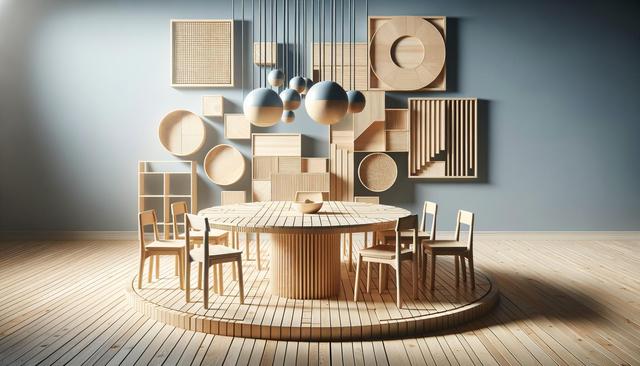Choosing the Right Tables for Your Restaurant: A Practical Guide
Selecting the right tables for a restaurant plays a vital role in shaping the dining experience and supporting operational efficiency.

Understanding Space and Layout Requirements
Before choosing any furniture, it’s essential to evaluate your restaurant’s floor plan and seating capacity. The type of table you select must complement the available space while enabling smooth movement for both customers and staff. For example, smaller dining areas may benefit from compact square or round tables, whereas larger venues can accommodate more generous rectangular setups. Equally important is ensuring accessibility and comfort, which means leaving adequate space between tables for guests to move freely and for servers to deliver prompt service. In some modern establishments, innovative options like a Touch Screen Conference Table can be integrated into private dining or meeting areas, promoting both interaction and functionality.
Taking the time to map out your layout not only helps with design but also maximizes occupancy without compromising on customer experience. Consider factors such as:
- Traffic flow in busy hours
- Flexibility for rearranging tables during events
- Type of dining service (casual, fine dining, buffet, etc.)
Balancing aesthetics and practicality begins with understanding how your layout influences day-to-day operations.
Material and Durability Considerations
Restaurants experience high foot traffic and frequent furniture use, making durability a top concern. Tables need to withstand constant use, spills, and cleaning without losing their appearance or function. Materials like solid wood, metal, and high-pressure laminates are commonly used due to their resilience and ease of maintenance. When investing in Custom Restaurant Furniture, it’s crucial to discuss material options with the manufacturer to ensure the final product aligns with your practical requirements and design vision.
Each material offers distinct advantages:
- Wood: Classic look, great for rustic or upscale themes
- Metal: Durable and often used in industrial or contemporary designs
- Laminates: Cost-effective and versatile in appearance
Incorporating durable materials ensures your investment lasts longer and maintains the restaurant’s overall aesthetic appeal.
Table Functionality and Customer Experience
Beyond aesthetics and durability, the functionality of your tables can significantly influence the dining experience. For example, communal tables can foster a social atmosphere, while intimate two-seaters are ideal for couples or quiet meals. Modern technology trends have also introduced interactive options like the Touch Screen Table, which can enhance customer engagement, especially in tech-forward or themed environments.
When selecting tables, consider these functional aspects:
- Ease of cleaning and maintenance
- Adaptability for various group sizes
- Compatibility with seating types (e.g., chairs vs. booths)
Tables that enhance comfort and utility can lead to longer dining periods, repeat visits, and positive word-of-mouth. Matching functionality with your restaurant’s theme and target audience is key to delivering a cohesive and satisfying experience.
Balancing Cost-Effectiveness and Design
Budget constraints are a reality for many restaurant owners, but that doesn’t mean compromising on quality or design. Exploring options like Used Restaurant Chairs and Tables Wholesale can provide access to high-quality furniture at a fraction of the cost. This approach is particularly useful for new establishments or those undergoing renovations on a tight budget. It’s essential, however, to inspect second-hand furniture carefully for durability and hygiene standards.
Cost-effective strategies include:
- Mixing new custom pieces with well-maintained used items
- Buying in bulk to negotiate better prices
- Prioritizing key areas (e.g., front of house vs. staff break rooms)
Striking a balance between affordability and design can ensure you maintain a strong brand image while staying within financial limits. Additionally, sourcing locally or from specialized suppliers can reduce transportation costs and delivery times.
Incorporating Booths and Specialized Seating
Restaurant booths are a popular choice for adding a sense of privacy and comfort. When browsing Restaurant Booths for Sale, consider their dimensions, upholstery, and how easily they can be integrated into your existing layout. Booths are particularly effective in maximizing wall space and creating cozy dining sections for small groups or families. They also tend to encourage longer stays, which can be beneficial for establishments that rely on a relaxed dining pace.
Key benefits of booths include:
- Improved acoustics and reduced noise levels
- Defined seating zones that enhance layout structure
- Customizable design to match your restaurant’s theme
Whether you’re aiming for a casual diner atmosphere or a more refined setting, booths can be tailored to suit a wide range of styles and space requirements.
Conclusion
Choosing the right tables for your restaurant involves more than just aesthetics. It’s a strategic decision that impacts customer satisfaction, staff efficiency, and overall brand perception. From exploring innovative solutions like a Touch Screen Conference Table to investing in Custom Restaurant Furniture that reflects your unique style, the options available today are vast and versatile. By considering functionality, space utilization, material durability, and cost-effectiveness—including options like Used Restaurant Chairs and Tables Wholesale and Restaurant Booths for Sale—you can create a dining environment that’s as practical as it is inviting. Ultimately, the right tables help set the tone for memorable dining experiences that keep guests coming back.